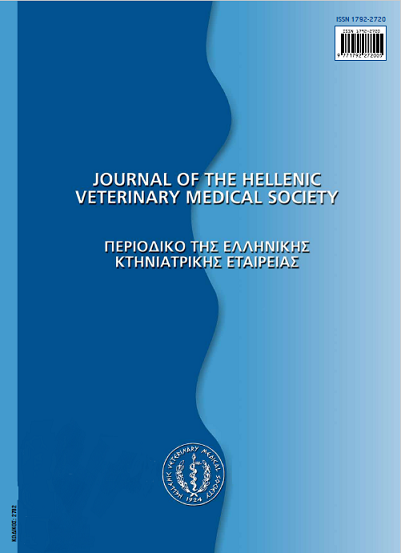‘Ξένο’ DNA από τη χορηγούμενη τροφή στον οργανισμό των ζώων και αξιολόγηση της ασφάλειας των γενετικώς τροποποιημένων ζωοτροφών

Περίληψη
Κατ’ αρχήν γίνεται αναφορά στη σημασία των εφαρμογών της βιοτεχνολογίας στη διατροφή των ζώων, με ιδιαίτερη αναφορά σε θέματα διαγονιδιακών φυτών, στα οποία ανήκουν οι περισσότεροι από τους γενετικώς τροποποιημένους οργανισμούς που χρησιμοποιούνται ως ζωοτροφές. Επί πλέον, υπογραμμίζεται η σημασία αυτών των φυτών ως ζωοτροφών, καθώς και η ανάγκη κάλυψης του θέματος από την Ευρωπαϊκή νομοθεσία, δεδομένου ότι ο πιο διαδεδομένος δημητριακός καρπός και ελαιούχος σπόρος παγκοσμίως (καλαμπόκι και σόγια, αντίστοιχα), καθώς και ο βαμβακόσπορος και η ελαιοκράμβη, εμπίπτουν στην παραπάνω κατηγορία πρώτων υλών. Επίσης, γίνεται αναφορά, στη διαδικασία έγκρισης των γενετικώς τροποποιημένους πρώτων υλών ζωοτροφών από την Ευρωπαϊκή Ένωση. Περαιτέρω, παρατίθενται απόψεις αναφορικά με την αποδόμηση θραυσμάτων του ‘ξένου’ DNA στην τροφή, τα οποία προέρχονται από διαγονιδιακά φυτά, στον οργανισμό του ζώου.
Σε αυτό το πνεύμα, συζητείται η μεταφορά και η τύχη του DNA από γενετικώς τροποποιημένα φυτά στο σώμα των αγροτικών ζώων και τα παραγόμενα από αυτά προϊόντα. Στη συνέχεια, προκειμένου να αντιμετωπιστεί το θέμα της θρεπτικής αξιολόγησης της ποιότητας των ζωοτροφών από γενετικώς τροποποιημένα φυτά στη χορηγούμενη στα ζώα τροφή, εισάγεται ο όρος ‘ουσιώδης ισοδυναμία’, η οποία αναφέρεται στην περιεκτικότητα σε θρεπτικά συστατικά και ανεπιθύμητες ουσίες σε τροποποιημένες και συμβατικές ζωοτροφές. Επίσης, παρουσιάζεται η εξασθένηση της ισχύος της ‘ουσιώδους ισοδυναμίας’ στην καθιέρωσή της ως κριτηρίου ασφάλειας για ζωοτροφές από διαγονιδιακά φυτά. Επιχειρείται, επίσης, ανασκόπηση της αξιολόγησης της ασφάλειας των γενετικώς τροποποιημένων ζωοτροφών, ιδιαίτερα δε του ανθεκτικού σε ζιζανιοκτόνα ή έντομα καλαμποκιού, μέσω της επίσημης διαδικασίας, όπου η εκτίμηση του κινδύνου διεξάγεται από την EFSA και η διαχείριση αυτού από την Ευρωπαϊκή επιτροπή. Η αξιολόγηση του κινδύνου των γενετικώς τροποποιημένων ζωοτροφών εξετάζει ζητήματα όπως ο μοριακός χαρακτηρισμός αυτών, η σύγκριση της σύνθεσης τροποποιημένων και (αντίστοιχων) συμβατικών ζωοτροφών και η εκτίμηση της θρεπτικής αξίας των τροποποιημένων ζωοτροφών. Τέλος, γίνεται αναφορά σε θέματα περιβαλλοντικών επιπτώσεων από τη χρήση τροποποιημένων ζωοτροφών, περιλαμβανομένων των επιπτώσεων στη βιοποικιλότητα, καθώς και σε μέτρα άμβλυνσης αυτών.
Λεπτομέρειες άρθρου
- Πώς να δημιουργήσετε Αναφορές
-
ZOIOPOULOS (Π.E. ΖΩΙΟΠΟΥΛΟΣ) P. E., & NATSKOULIS (Π. ΝΑΤΣΚΟΥΛΗΣ) P. (2017). ‘Ξένο’ DNA από τη χορηγούμενη τροφή στον οργανισμό των ζώων και αξιολόγηση της ασφάλειας των γενετικώς τροποποιημένων ζωοτροφών. Περιοδικό της Ελληνικής Κτηνιατρικής Εταιρείας, 64(1), 69–83. https://doi.org/10.12681/jhvms.15481
- Τεύχος
- Τόμ. 64 Αρ. 1 (2013)
- Ενότητα
- Review Articles
Οι συγγραφείς των άρθρων που δημοσιεύονται στο περιοδικό διατηρούν τα δικαιώματα πνευματικής ιδιοκτησίας επί των άρθρων τους, δίνοντας στο περιοδικό το δικαίωμα της πρώτης δημοσίευσης.
Άρθρα που δημοσιεύονται στο περιοδικό διατίθενται με άδεια Creative Commons 4.0 Non Commercial και σύμφωνα με την άδεια μπορούν να χρησιμοποιούνται ελεύθερα, με αναφορά στο/στη συγγραφέα και στην πρώτη δημοσίευση για μη κερδοσκοπικούς σκοπούς.
Οι συγγραφείς μπορούν να καταθέσουν το άρθρο σε ιδρυματικό ή άλλο αποθετήριο ή/και να το δημοσιεύσουν σε άλλη έκδοση, με υποχρεωτική την αναφορά πρώτης δημοσίευσης στο J Hellenic Vet Med Soc
Οι συγγραφείς ενθαρρύνονται να καταθέσουν σε αποθετήριο ή να δημοσιεύσουν την εργασία τους στο διαδίκτυο πριν ή κατά τη διαδικασία υποβολής και αξιολόγησής της.


